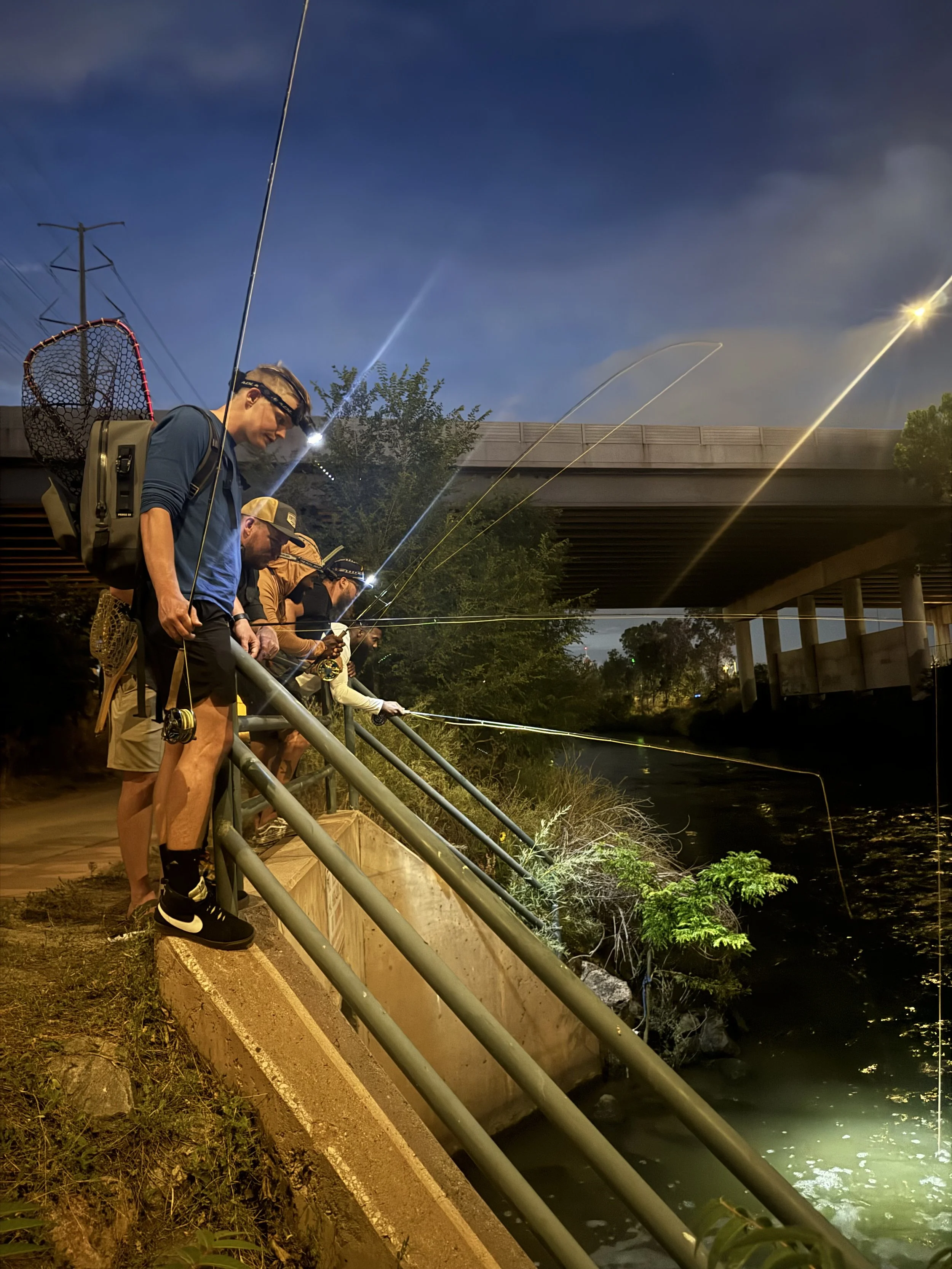The Antiquities Act was put in place to protect America’s special outdoor sites. Sixteen presidents, both Republican and Democrat, have used the Antiquities Act to establish National Monuments to be enjoyed by all, now and in the future.
Fly Fishing Argentina's Northern Patagonia
Over the last decade many cultures, which at one time were very different from ours, have become increasingly homogeneous. This is especially evident to those of us that travel for either work or pleasure. Unfortunately, one of the negative side effects of this “sameness” is that it is becoming harder and harder to find true adventure. Many of us conclude trips feeling as though the adventure we dreamed about and envisioned somehow eluded us or never materialized. If you have ever experienced these feelings or are just looking for some adventure - then head to Argentina’s Northern Patagonia. Here you will find a culture that is rich in tradition set against a landscape of natural beauty. More importantly, this is home to some of the best trout fishing on the planet. Discover this unique environment and experience firsthand its crystal clear rivers, pristine mountain lakes, numerous streams and unique spring creeks.
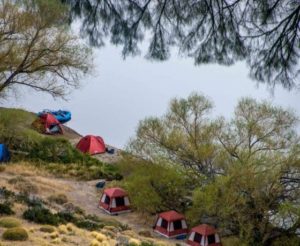 One way to fulfill your quest for adventure is to combine fly-fishing with camping as your lodging option. This will provide you with the opportunity to fully immerse yourself into the Patagonia wilderness without skimping on the creature comforts. Imagine a day where you fish the river, stream or lake of your dreams and then conclude the evening gazing into the star filled southern sky. You will be experiencing a side of Argentina that most people will never know.
One way to fulfill your quest for adventure is to combine fly-fishing with camping as your lodging option. This will provide you with the opportunity to fully immerse yourself into the Patagonia wilderness without skimping on the creature comforts. Imagine a day where you fish the river, stream or lake of your dreams and then conclude the evening gazing into the star filled southern sky. You will be experiencing a side of Argentina that most people will never know.
Andes Drifters, located in San Martin de los Andes, has perfected the art of deluxe camping. After multiple years of offering this unique lodging option they have literally equipped themselves to provide for all your needs. From sleeping bags and cots to solar showers and fine wines, it’s all included. They have thought of everything and your dedicated camp staff will pamper you so that you never have to lift a finger!
Another advantage to camping is the ability to fish water that may otherwise be inaccessible. Many rivers, streams and lakes in Patagonia are remote or have limited 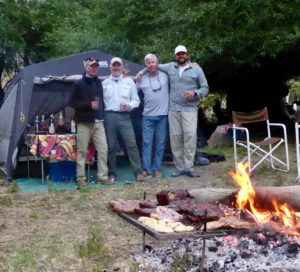 access. Camping becomes a practical lodging solution for those looking to fish on these waters less traveled. Equally important, camping allows you to maximize your time on the water, gives you a chance to fish the evening hatch and minimizes your time spent traveling.
access. Camping becomes a practical lodging solution for those looking to fish on these waters less traveled. Equally important, camping allows you to maximize your time on the water, gives you a chance to fish the evening hatch and minimizes your time spent traveling.
If you are planning a trout-fishing trip to Argentina, give the deluxe camping option some consideration. You can choose this as a one-night option or consecutive nights on an extended float trip. Either way, this is a wonderful way to enjoy Patagonia.
About Andes Drifters
Andes Drifters is located in San Martin de los Andes, Argentina. Our northern Patagonia headquarters is home to some of the best trout fishing in the world. Our seasoned guide team would love to show you this angler’s paradise! If you would like more information please contact: Kevin Landon from Andes Drifters. kevinlandon@me.com or www.andesdrifters.com
Andes Drifters is a proud supporter of Colorado Trout Unlimited.
Argentina Dream Stream - Andes Drifters from Andes Drifters on Vimeo.
Winter is Coming, but the fish are still out there!
Fishing doesn't have to end when the winter season rolls in. Many anglers find icefishing to be a fun way to enjoy to enjoy being outside on a brisk day with the fish swimming below the ice surface. In Colorado, there are many locations where ice fishing is allowed and with reliable reporting on ice thickness for safety. You can check out the Colorado interactive parks map here. The Colorado Parks and Wildlife also has some quick tips before you start walking out onto the ice that you can read here.

Or if you don't want to bust out all the winter gear, then you can always head down to Pueblo and fish the Arkansas River tailwater below Pueblo Reservoir, one of Colorado's best winter fly fishing destinations. You can check out the local TU chapter, The Southern Colorado Greenbacks Trout Unlimited Chapter, if you want to know some of their best Arkansas River fishing tactics and locations.
Additional Resources:
Beginning Ice Fishing 2017 (Denver Post)
8 Ice Fishing Lakes in Colorado
Colorado Statewide Current Fishing Conditions
Behind the Fin: Michele White
Join us “behind the fin” with Michele White, V.P. Government Affairs, Pikes Peak Chapter of Trout Unlimited and Owner-Operator of Tumbling Trout Fly Shop in Lake George, Colorado.
How long have you been a TU member?
Since 1998.
Why did you become a member and what chapter are you involved with?
I became a non-participating member because I wanted my money to be used in a donation capacity toward protecting trout habitat all over the United States.
What made you want to become involved with TU?
I met the people in our Pikes Peak Chapter and I realized that I like them...
What is your favorite activity or project you have done with TU?
So many... I would almost say teaching fly tying hands down but when I am out on a river helping a group of people do some really laborious task (like harvest and plant willows) - I really do enjoy myself. (Sometimes I cook at the grill for groups and sometimes I man a booth, I like that too...)
I know you won’t tell me your favorite spot, but what is your second favorite place to fish or favorite fishing story?
Some fishing stories are about places, boats, bars, trucks, and dogs. Michele White, who writes under the name, Michele Murray, has submitted a humorous essay for Trout Unlimited readers to enjoy from a compilation of short stories written by three authors (Michele Murray, Al Marlowe, and Karen Rae Christopherson) in “Between the Rivers” – stories about adventures that happen on the road, at the campsite, in a bar, as well as during the fishing trips. “Joe’s Bar” is a tale in common with most fishing people living the dream.
What does being a part of TU mean to you?
I am part of the solution. Being part of TU means I am contributing to the preservation of riparian habits, not only for trout but also for other wildlife and to the enhancement of recreation for humans.
What else do you do in your spare time or work?
I have a close family and I spend a lot of time with my loved ones. That said, in my spare time I paint, I write short stories, I play the bassoon, I hunt upland game birds, and I ride my horses. The writing has played out as an alternate sub-career / hobby, in that I have multiple books now. The latest is under review for print, "BETWEEN THE RIVERS - FLY FISHING STORIES OF THE WEST". It may be ready by Christmas. In the meanwhile, I have copies of "Lesser known Fly Fishing Venues in South Park" for sale in my shop and online. This is a 71 page map booklet (atlas) with color maps, images, and description of every free public fishing access in South Park basin excluding the Dream Stream and Eleven Mile Canyon.
Clean Water for All, including the fish
Coloradans have a special connection with our headwaters; in many ways we are the headwaters of the nation. For Colorado Trout Unlimited, our members in 24 local chapters across the state engage under the Clean Water Act both as advocates for healthy streams and by filing for and securing permits that allow us to partake in collaborative instream habitat improvement and fish passage projects.
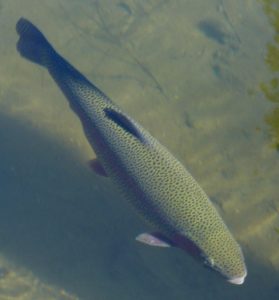
Colorado Trout Unlimited stands with the 2015 Clean Water Rule and we believe it provides a reasonable amount of protection for our coldwater resources and therefore needs to stay intact. America's headwaters are the start of our country's iconic rivers. These waters provide the spawning and rearing habitat for trout, salmon, and other wild and native fish that contribute greatly to the $50 billion recreational fishing industry in the United States. What's more, these streams send clean water downstream, where it is used for our farms and communities.
Water is an important resource for all and deserves the protections that keep it clean, flowing, and usable. To make that happen, we need to protect our waterways from their sources: the small, seasonal headwater and feeder streams whose flow makes up our larger perennial rivers downstream.
Colorado TU submitted comments to the EPA and Army Corps of Engineers on the scope of the Clean Water Act and why headwater protection is so important. Click here to read the full letter written by David Nickum, Executive Director of Colorado Trout Unlimited.
A second look at "trash fish"
Ugly fish. Trash fish. Suckers. Chubs. A lot of native fish in our rivers don’t get no respect. Many anglers consider them good for nothing, except for throwing back—way back onto the bank.
But we anglers and sportsmen who care about rivers and cutthroats need to adjust our attitude a bit and quit looking down our noses at some of the “other” native fish.
Turns out “trash” fish like Colorado pikeminnow, razorback sucker, humpbacked chub, bonytail and other native species are critically important to river and trout habitat conservation efforts here in the Colorado River Basin and other watersheds in the West.
And trout and other angler-favored species are riding their fintails to a better life.
The pikeminnow has been around for millions of years in the Colorado Basin and can grow up to 6 feet long and live for decades. Pioneers used pitchforks at times, it’s said, to haul them out of the river, they were so abundant. The fish provided food (albeit a bit bony) for the settlers.
But with growing water diversions, drought, invasive species and other factors pressuring the river in the last half century, the numbers of these native fish plummeted, and they were listed under the Endangered Species Act. In 1988, the Upper Colorado River Endangered Fish Recovery Program was launched to bring them and the chubs and suckers back to sustainable numbers.
For three decades, the program has fostered cooperation, rather than conflict, among water users and directed federal and state funds to infrastructure projects that have benefited multiple users, from ranchers and farmers to municipalities.
Trout Unlimited and other conservation groups have supported those efforts, because the water projects, improved infrastructure and enhanced river flows needed to recover pikeminnows, suckers and chubs also benefit upstream coldwater species like trout.
For instance, TU helped upgrade the Relief Ditch and Hartland irrigation diversions on the Gunnison River a few years ago—a project that improved habitat and flows for trout.
The project would not have been possible without funds directly tied to native fish recovery.
Cary Denison, TU’s project coordinator in the Gunnison area, says that many anglers don’t realize that much of the West’s native trout have been removed from their historical ranges, and the remaining “natives” are those fish that many consider to be trash fish.
“If we aim to improve these rivers, we need to leverage the importance of these species to improve trout habitat as well.”
They are some of the original members of that river community, and they belong there. We need all of the pieces of a river ecosystem intact to keep it healthy.
So take a second look at that “trash” fish and give it some serious props for helping improve and restore our rivers for the other fish species we love.
Randy Scholfield is TU’s communications director for the Southwest.
Photo credit: US Fish and Wildlife Service
"Catch and Release" Partnership on the Big Thompson
In 2013, devastating floods ripped through canyons near Estes Park, Colorado - wiping out vegetation, roads, and of course the common signs we are used to seeing as anglers. While the Colorado Department of Transportation continues to rebuild the infrastructure and river channel, local organizations have partnered to support the effort in their own way - restoring "Catch and Release" signs to the Big Thompson. In 2017, the Alpine Anglers chapter raised funds during monthly meetings and events over the summer to purchase the signs, posts and hardware, as well as, worked with Colorado Parks and Wildlife to procure the proper signage. Kirk Bien, who owns and operates the Kirk's Fly Shop and Guide Service, was eager to get the signs replaced by the flood as he and the shop's guides have noticed an increasing number of bait users and fishermen taking fish from this fragile nine mile stretch of water.
 Working together, the two groups helped to build the signs and Kirk's guides put them out in the Fall. As the ecosystem slowly begins to rebuild itself, it is critical that anglers respect the fragile nature of these fish populations. Thank you to Kirk's Fly Shop, the guides, and our members in the Alpine Anglers Chapter for helping to protect this recovering stretch of river!
Working together, the two groups helped to build the signs and Kirk's guides put them out in the Fall. As the ecosystem slowly begins to rebuild itself, it is critical that anglers respect the fragile nature of these fish populations. Thank you to Kirk's Fly Shop, the guides, and our members in the Alpine Anglers Chapter for helping to protect this recovering stretch of river!
More about Kirk's:
Kirks Fly Shop is located in beautiful Estes Park, Colorado, the Gateway to Rocky Mountain National Park. They are a family owned and operated, full pro-line fly shop, offering the top of the line fly fishing equipment, as well as backpacking and camping gear. Fly Fishing, hiking, backpacking and climbing in the great outdoors and Rocky Mountains are their passions, and they want to share our passion with you and make sure you have the most enjoyable and memorable Rocky Mountain National Park experience.
More about Alpine Anglers:
Alpine Anglers supports the native cutthroat trout recovery program in Rocky Mountain National Park. With our friends and fellow TU members, we provide more than 1200 hours of volunteer effort each year. In 2008, the Mountain-Prairie Region of the U.S. Fish and Wildlife Service presented Alpine Anglers a Regional Director's Award for conservation in recognition of our support of the greenback cutthroat recovery program.
We also hold learn-to-fly fish days for young people in Estes Park. We clean up the Big Thompson River. We assist with post-flood restoration efforts. We meet and learn about new places and new ways to fish. We get together to socialize and have fun. And we occasionally travel and fish together. Check out our activity calendar to see what we're doing this year.
Contacts:
President: Lynn Myers
Membership: Danny Meade
Communications: Dwight Strandberg
You can reach us through our chapter email: AlpineAnglers.TU@gmail.com or on Facebook at Trout Unlimited - Alpine Anglers Chapter #453
Trout in the Classroom: The Eggs have Arrived!
Trout in the classroom (TIC) is an environmental education experience that fosters hands-on learning through the rearing of trout from eggs to fry. The program provides K-12 students meaningful opportunities to apply relative topics taught in the curriculum to the life cycles emerging before them, as well as to the variety of challenges that arise out of maintaining a steady state environment for the growing trout. A General Overview...
While the Trout in the Classroom program has been adopted on a robust level in many states throughout the U.S., it is just beginning to emerge as a teaching tool for schools here in Colorado. In 2016, Colorado TU supported five sites around the state. In 2017, we expect that number to more than double, with TIC programs being adopted by teachers, TU chapters, and their local communities throughout the state. The sites will range from elementary school classrooms to college science labs and can be found across Colorado –from the suburbs of Aurora, to the Grand Mesa on the Western Slope.
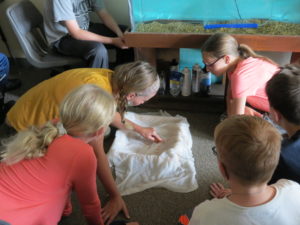
Trout in the Classroom offers a high degree of flexibility for teachers when it comes to applying trout life cycles to the core curriculum. Lesson plans can be adapted to link learning objectives with “real world” outcomes.
For example, students at a site in Blackhawk, CO routinely help test the water quality of their tank; identifying potential issues (i.e. the water is becoming too acidic), using problem solving skills to propose solutions (add “x amount” of a certain chemical compound), and charting the results over time. Is the health of the fish or pH improving?
Within any TIC activity, youth find themselves emboldened by opportunities to apply math and science concepts to actual problems, as well as receive the added social benefits of identifying challenges within their environment and taking concerted efforts to solve them.
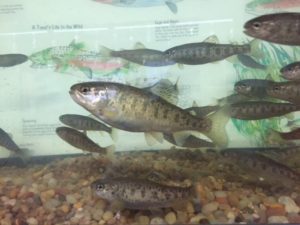 "I like testing the water to help keep the fish alive," says one of the students in the Blackhawk classroom.
"I like testing the water to help keep the fish alive," says one of the students in the Blackhawk classroom.
In short, TIC is not just helping to prepare the upcoming wave of engineers and scientists – it is also empowering the next generation of stewards.
To demonstrate the impacts that TIC is having in classrooms around the state, Colorado TU will be following the program in a handful of schools and providing regular updates from the field.
October-November: The Eggs Have Arrived!
At the time of this article (early November), there are currently four classrooms that have eggs in the water and several others that are in the process of setting up their equipment. Once a site is ready, the rainbow trout eggs are shipped over night from the Ennis National Fish Hatchery in Montana and arrive at the classroom early the next day. Teachers have been working closely with their students to carefully place the eggs in the tank and some are even starting to see them hatch now!

Profile: 5th Grade Science Class at Gilpin County School, Blackhawk, CO
Student: Avery Ramsey, 5th Grade
"Our trout program in Gilpin is really cool. It is amazing to watch them grow. We learned about each stage in a trout’s life, and now we actually get to see it!"
Teacher: Vanessa Grenader
"Trout in the classroom provides hands on, inquiry-based learning. As a project based teacher, this program fits into my curriculum perfectly. I am able to engage the students, and integrate the 5th grade science standards into the program seamlessly. My students feel like real scientists as they learn. Now, I can’t imagine a school year without our trout!"
--
For more information on Trout in the Classroom, you can follow the links below, or contact Dan Omasta (domasta@tu.org) at Colorado TU.
National Trout in the Classroom Project
Behind the Fin: Briant Wiles
Join us "behind the fin" with TU volunteer and President of the Gunnison Angling Society, Briant Wiles. How long have you been a TU member?
I have been a TU member for six years now.
 Why did you become a member and what chapter are you involved with?
Why did you become a member and what chapter are you involved with?
I became a member because I was increasingly aware of TU's impact in the region. The more I learned about what TU stands for and what they do, the more I felt that this was an organization that aligns with my values. So a few years after becoming a member I started to get involved with my local chapter the Gunnison Angling Society.
What made you want to be involved with TU?
I wanted to get involved with TU because of the opportunity there was to make a difference in local waters. The more I learned about the issues impacting coldwater fisheries and their watersheds, the more I saw these impacts nearly everywhere I looked. Right now there exists a big opportunity to work to address a host of impairments with common sense approaches that could have long lasting impacts. TU is an organization that I see as being effective in working on these often contentious natural resource issues. So for me, wanting to make an impact and effect change, TU was an easy choice. Not to mention all the fun I have had connecting with other passionate anglers and improving my fishing game.
What is your favorite activity or project you have done with TU?

By far my favorite project I have done with TU has been the Gunnison Basin Adopt-A-Trout program. This grass root effort was really rewarding and I learned a lot. Through the project, we were able to tag and track trout, do riparian restoration, and I have had the opportunity to speak to hundreds of youth from the Gunnison Area and around the country about the importance of trout habitat. Through the project, I was really able to grow and develop as a community member. Now I am more aware and involved with local issues such as growth and development in our little mountain valley. I mean who among us would not jump at the chance to handle and track trout in the hopes of a better tomorrow?
I know you won’t tell me your favorite spot, but what is your second favorite place to fish or favorite fishing story?
The Gunnison area is a blessed place to cast a fly rod with plenty of options. There is, of course, a few places that I hold more dear than others. One that I don't mind sharing is the Black Canyon of the Gunnison. For one, getting into this large hole in the earth and out again is difficult so not too many folks will venture there anyway. If your idea of fun is scrambling down loose scree, navigating large cliffs and thrashing your way through dense thickets of towering poison ivy than the Black may just might be right for you. I have had some of my more memorable experiences battling the geology in the depths of the canyon, finding large eager fish waiting in a pristine setting. A magical place for sure.
What does being a part of TU mean to you?
Being a part of TU means that you are part of the future. TU's commitment and values align well with my own. For me, the TU decal on a pickup's rear window is a sign that there are others out there that share those same values. TU is highly regarded among conservation organizations and is considered a major player in many local issues impacting water. A message of progress that I can gladly get behind while looking to a sustainable future.
 What else do you do in your spare time or work?
What else do you do in your spare time or work?
I connect to the outdoors in three meaningful ways: Winter, I am splitboarding in the Crested Butte backcountry; Fall, I chase elk, grouse and ducks; all other times I am fishing. My passion for the outdoors has led me to a career in natural resource conservation and I am currently building experience working on water related issues. I hope to be able to grow my own business consulting and working on natural resource issues in the Gunnison Basin and beyond.
Keeping Natives Alive on Abrams Creek
A unique species of native cutthroat on Abrams Creek: help is on the way. By Randy Scholfield
Living with less water—that’s the reality facing all of us who depend on the Upper Colorado River for our drinking water, food production, and outdoor recreation.
A recent scientific paper found that the Upper Colorado River Basin has lost 7 percent of its flows in last three decades due to higher temperatures caused by human-induced climate change. In a basin that supplies water for 40 million people and where every drop is used and accounted for, that’s only the latest red flag that our world is changing and that we need to take collective action to keep our rivers and communities healthy.
That’s why projects like Abrams Creek are so important.
This tiny creek outside of Gypsum has a rare population of native Colorado River cutthroat trout that’s genetically unique and the only aboriginal trout population in the Eagle River watershed. And because Abrams Creek has a lower elevation than many cutthroat streams, say biologists, its native trout might be better adapted to warmer temperatures—another reason why this vulnerable fish population is important to preserve.
For more than a century, however, Abrams Creek has been de-watered by irrigation diversions that drastically reduce its flows in late summer and fall. The trout have been hanging on, but they’re seriously pressured. Colorado Parks and Wildlife has called this population the “highest priority” for cutthroat conservation efforts in Western Colorado.
In 2016, Trout Unlimited’s Mely Whiting helped negotiate a deal with the local irrigation company, Buckhorn Valley Metro District, which agreed to pipe their irrigation ditch and thereby reduce leakage by 40 percent, with the water savings going back into the creek to keep the fish healthy.
The biggest hurdle was money. Piping the irrigation ditch along several miles of ditch would cost more than $1 million.
A year later, says Whiting, this fundraising goal has been met, thanks to efforts by TU, Eagle Valley Trout Unlimited, Buckhorn Valley, CPW and the Eagle River Watershed Council, who secured grants from a variety of sources, including the Colorado Water Conservation Board, Colorado River Basin Roundtable, Bureau of Reclamation and the town of Gypsum, as well as donations from BLM, Colorado's Species Conservation Fund and local buisnesses like Fortius Realty, NAI Mountain and Alpine Bank.
“Turns out, a lot of people were ready and willing to step up to protect this jewel of a stream,” says Whiting. Because of these collective efforts, she says, the project is officially a go. Construction is expected to start next year on piping the ditch, and the future of Abrams Creek cutthroats looks bright.
In an age of changing climate and paralyzing partisanship, it’s easy to get discouraged about the prospects for our rivers and streams.
One lesson of Abrams Creek: In a world of less water, there’s hope for preserving the health and quality of our rivers, fish and wildlife if we dig in and work together on solutions.
For more information and to donate to the project, go to TU’s Abrams Creek project page.
Randy Scholfield is Trout Unlimited’s director of communications for the Southwest.



